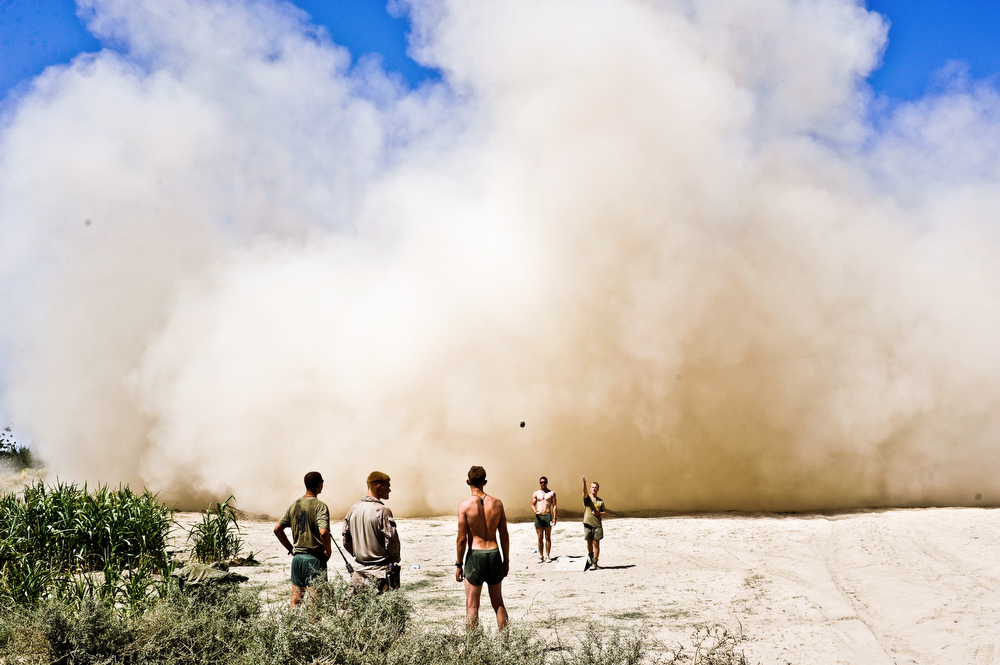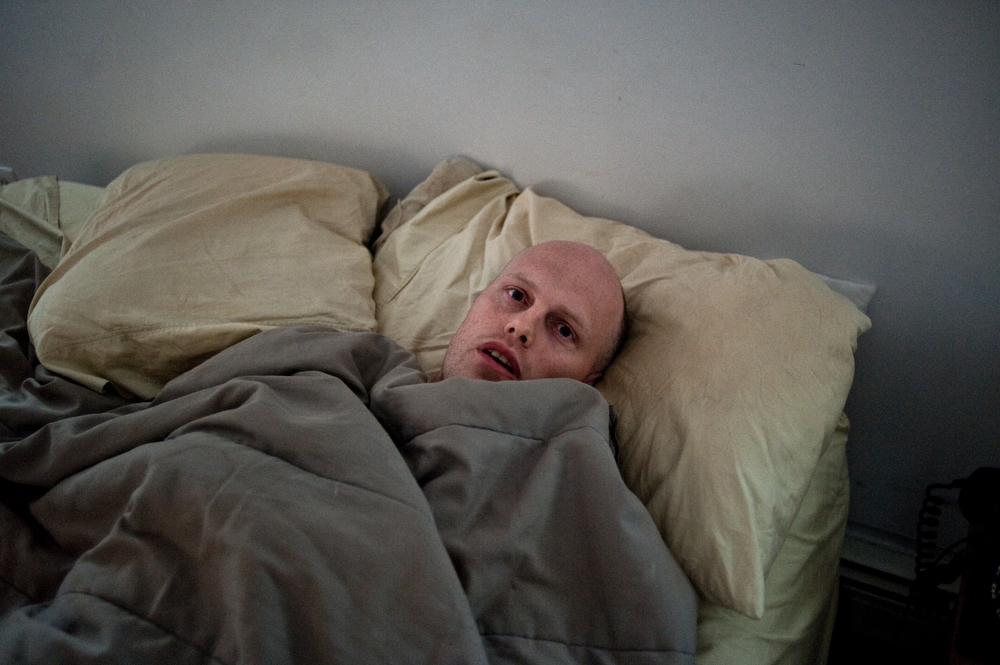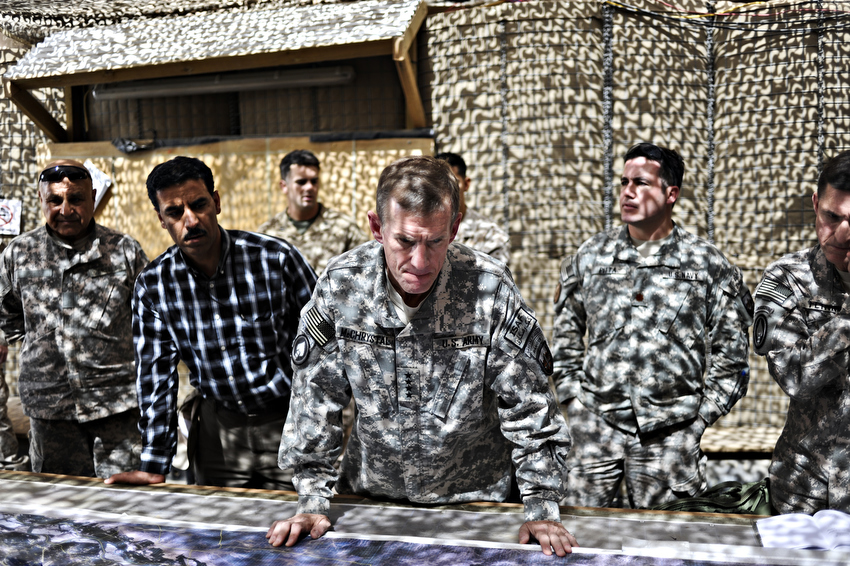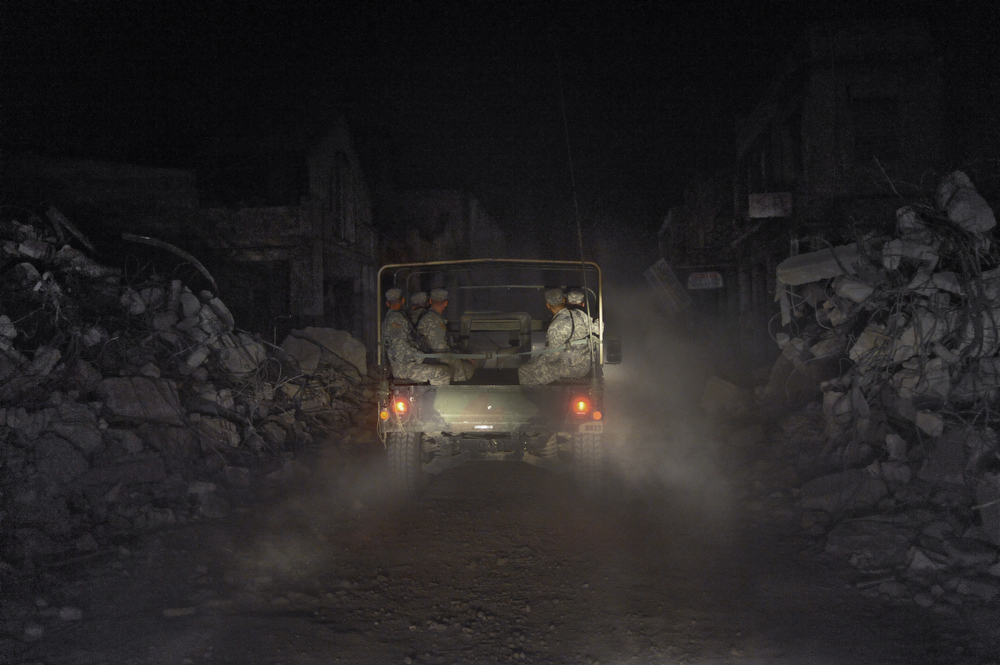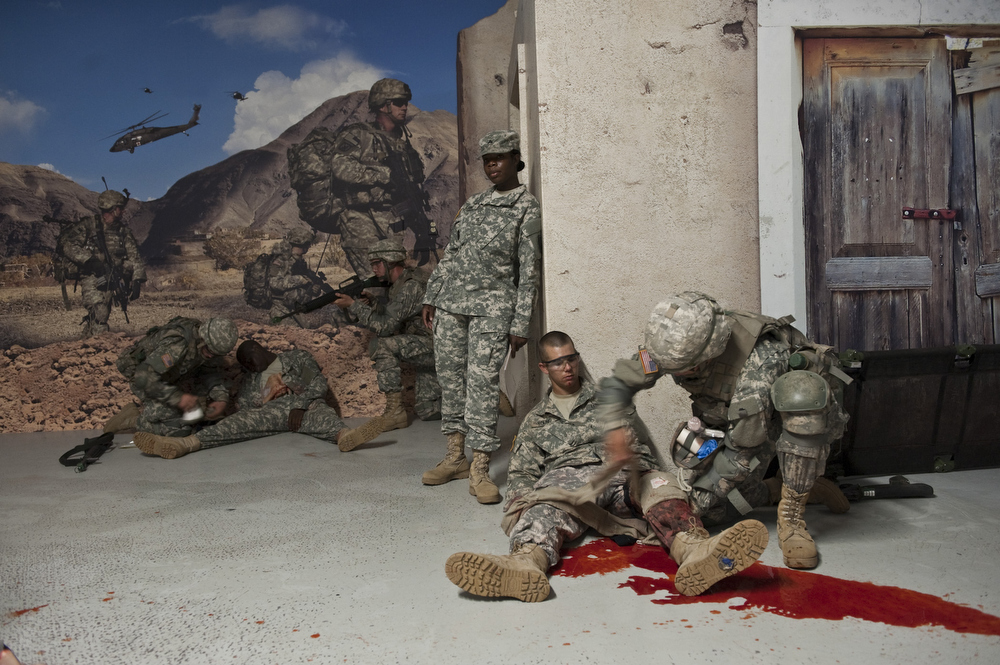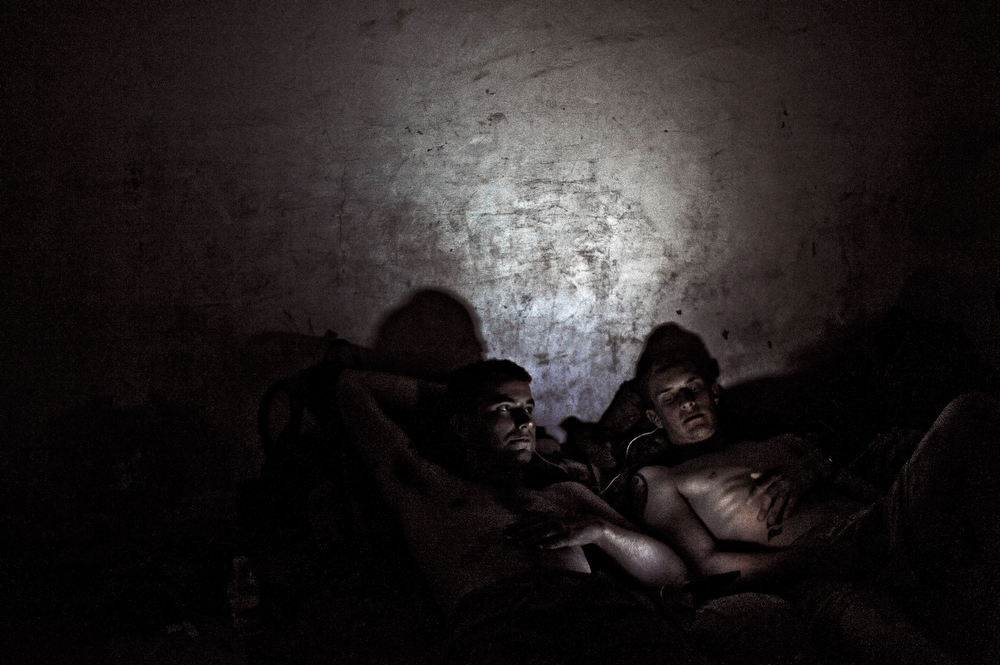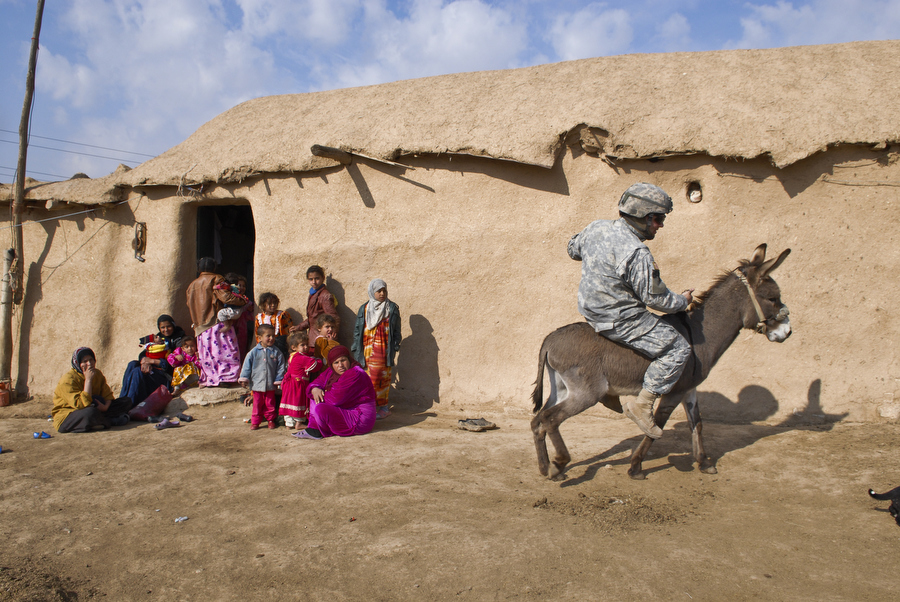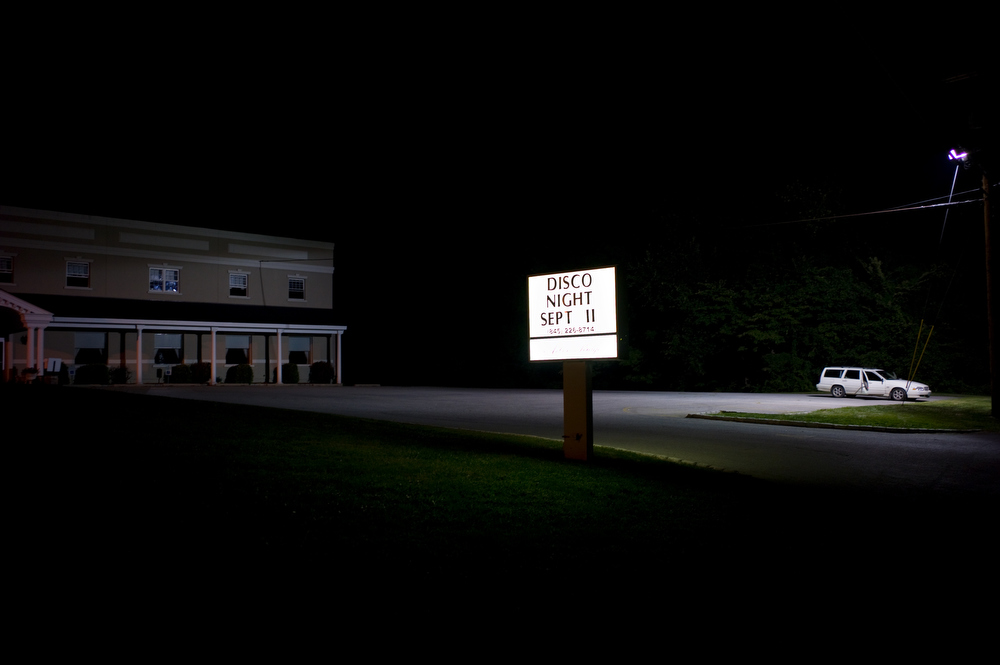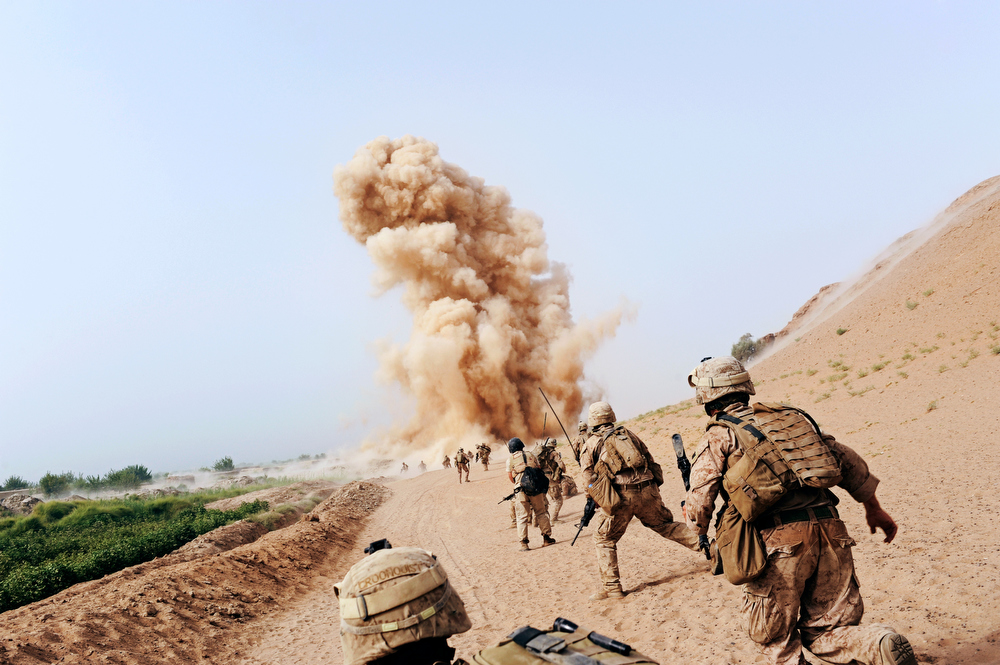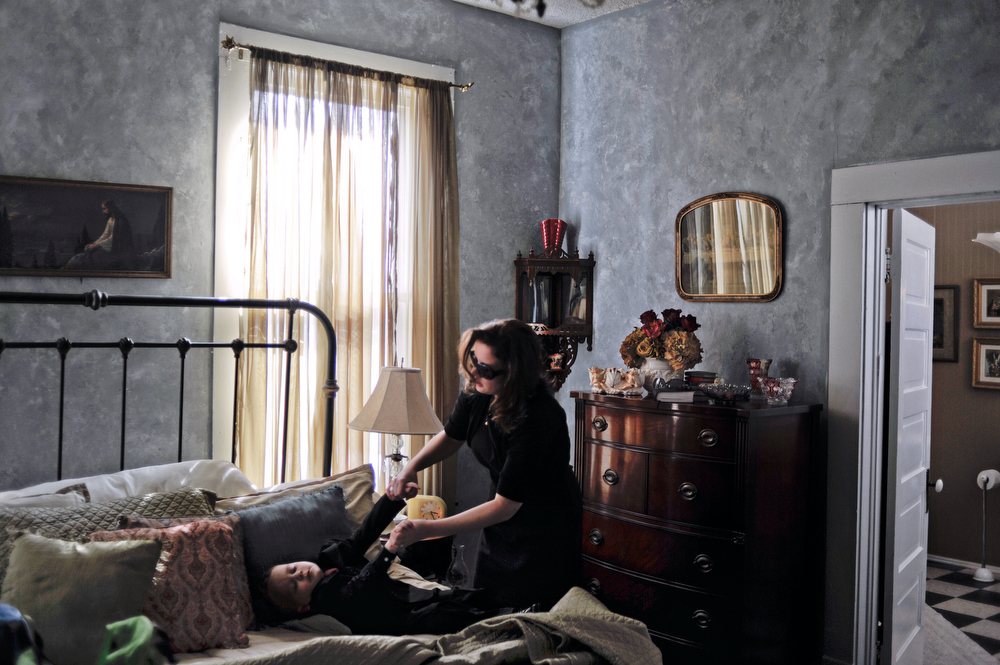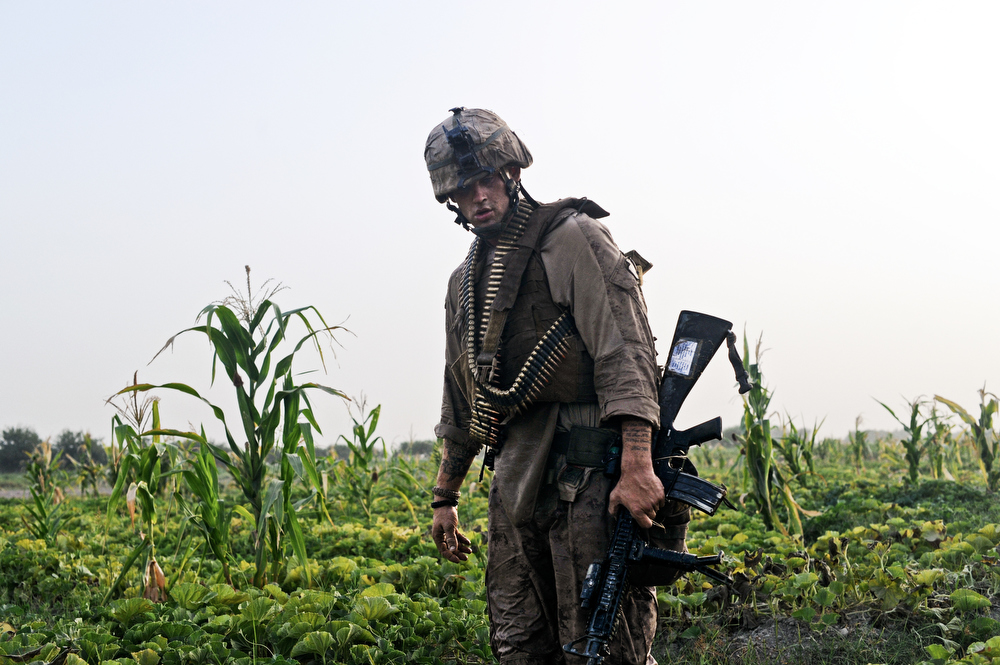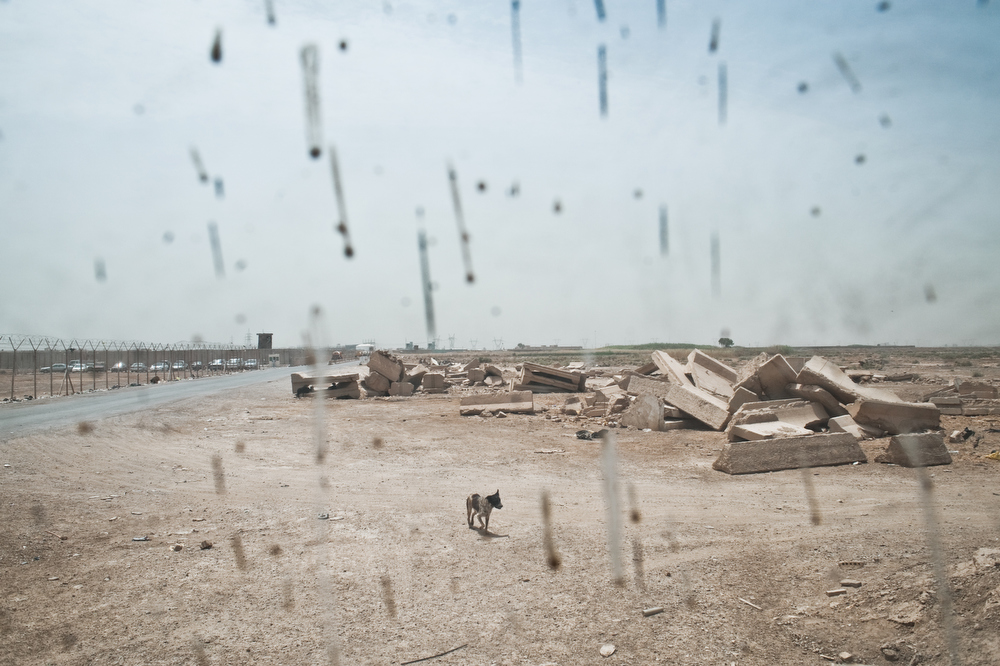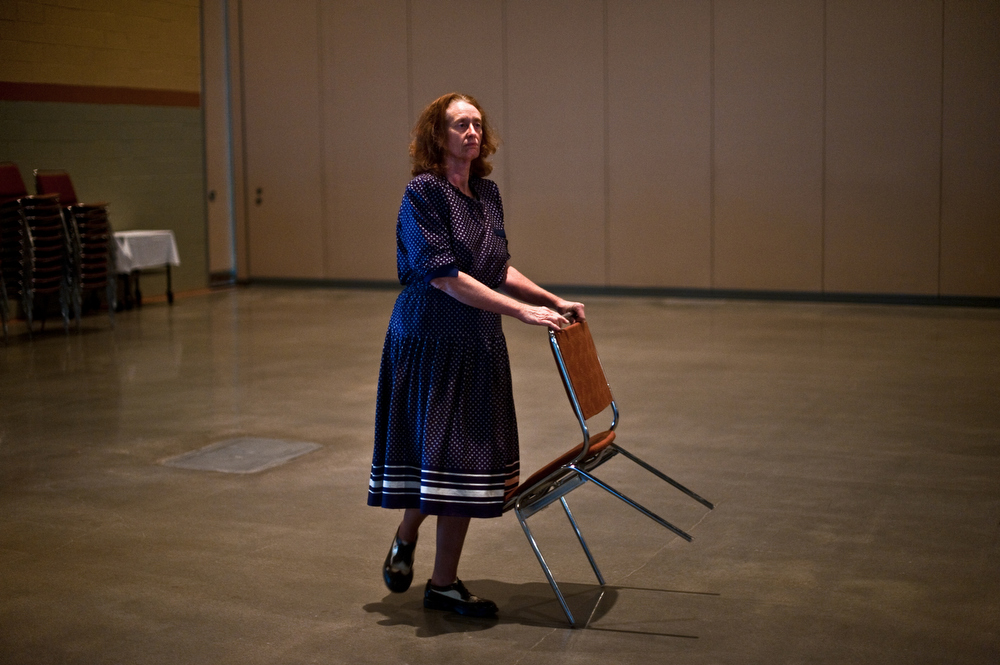Honorable Mention: Peter Van Agtmael
Artist Statement: Disco Night Sept 11
Disco Night Sept 11
Ever since I was a kid I've longed for war. I played endlessly with toy soldiers and model airplanes, re-creating scenes from the bloodless and dispassionate trumpet blaring war movies from the 60's and 70's. I wanted to be a soldier covered in medals and proud in valor. When I got older I found Life Magazine chronicles of World War II with pictures of the dead burnt or bloody or frozen; by themselves and in vast numbers. I was shaken raw by reality, the one only hinted at.
In college I searched for identity. I wanted to be a part of something bigger than my selfish primal instincts. I started taking photographs and re-discovered images of war. By then the photographs resonated with temptation and promise. I thought that maybe I could change people's understanding of war; the way my own had shifted so permanently. I credited the pictures, which was a partial truth. A year later the Twin Towers fell. Iraq was invaded just before graduation. Reality was intersecting with my aspired ideals and I knew I had to cover the wars of my country and my generation. I first went to Iraq in the beginning of 2006 and began working in Afghanistan in 2007. I have been covering both wars since. When I returned home I showed the pictures to my friends and family. They were intrigued and troubled and sometimes moved but generally detached. I knew I could not emote my experiences how I wanted, so I began to look for intersections between home and war.
I told myself I'd remained healthy and stable despite the death and violence that I'd seen. I didn't really question that I was no longer sleeping through the night and staying up late watching YouTube videos of firefights. When I went back to war I felt at home. When I stepped outside the wire on my first patrol I after a year away from Afghanistan felt a surge of contentment. At that moment it was the only place in the world I wanted to be. One of my best friends got married that day in the Brooklyn Botanical Garden. My mom's birthday was a few days later and I was trapped in a cornfield as bullets cracked overhead. When I came home I did everything to excess, enjoying it but with a hardness.
The path I was on meant death. If not of my body, then of a part of myself more essential than the identity I had desired and created.
This is a record of a few of those years. I felt one thing more than anything else. Despite all the pain and confusion and isolation and impotence, I knew that what I recorded would only be a slender document. Nearly all the rest was constantly happening in anonymity across Iraq and Afghanistan and the U.S. in endless repetition of all that came before.

